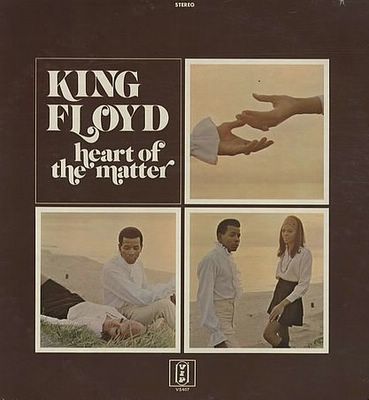Getting Along With Chuck Cornish

"Blue Eye Brother And Soul Get Along (Part 1)" (Charles H. Cornish)
Chuck Cornish, SSS International 793, c. 1969
Here’s the A-side of a 1969 two-part dance-inducer I uncovered in Memphis last year. I know very little about Chuck Cornish or this record, other than it comes from an era when he and several other New Orleans-related artists (Danny White, Betty Harris and Robert Parker) had one-off, funkified releases on Shelby Singleton’s Nashville-based SSS International Records. The label also issued nearly a dozen singles by Johnny Adams during it’s run. While Betty Harris' single that year for SSS (#766) featuring the killer "There's A Break In The Road" definitely was cut in New Orleans with three of the Meters plus James Black on drums, questions have come up about White's (#754) from 1968. There is some evidence that it was cut earlier in Memphis and then leased to Singleton through Allen Toussaint & Marshall Sehron's Tou-Sea/Sansu Productions. Meanwhile, Robett Parker had two singles leased to Singleton in 1969 and 1970, "You See Me"/"You Shakin' Things Up" issued on Silver Fox, and "The Hiccup"/"Rockin'Pneumonia" on SSS (#819); and it has come to light that Bob Robin produced those sessions in Muscle Shoals. Of all of them, Cornish's 45 still has the most questiom marks about its point of origin, though I favor New Orleans.
One thing I do know is that I sure cotton to "Blue Eye Brother And Soul Get Along". Even the title is syncopated; and the entrie song is upbeat in rhythm and theme. I mean, who can argue with it’s “make this world a happy home” sentiment addressed to the both sides of the racial divide? The drums give the track a strong start and add a tasty dash of funk flavor throughout. You can also get a hint of Chuck’s hometown in the way he pronounces the first word in the phrase "burnin'and lootin’” as "boynin'".
Prior to my finding this 45, Chuck Cornish was familiar to me mainly from a cool cut of his, “Ali Funky Thing” (which tried to live up to its title) on the first Funky Delicacies/Tuff City Funky Funky New Orleans CD compilation. That song, which I have since acquired on the original two-part single came out on Wand 11272 in 1974, and, as far as I can tell, was the singer’s last release. His first (and only other) seems to have been "A Tribute To Mohammad Ali"/“Let’s Go Steady” on Cosimo Matassa’s White Cliffs label (#258) out of New Orleans around 1967. Obviously, Chuck had a few things he needed to say about the former Cassius Clay.
Other than his three singles, I find that, in the late 1950’s and early 1960’s, Cornish co-wrote a number of tunes with standout collaborators on the Crescent City scene, such as Dave Bartholomew, Adolph Smith and Pearl King. But I have yet to track down who recorded them. Since he also composed the songs on his solo releases, I think it’s safe to say that Chuck Cornish, if not prolific, was a well-qualified songwriter, who adapted to the times, turning out some groovers certainly worth remembering in the funky stack o’ tracks that emanated from the Home of the Groove around the start of the Seventies.














